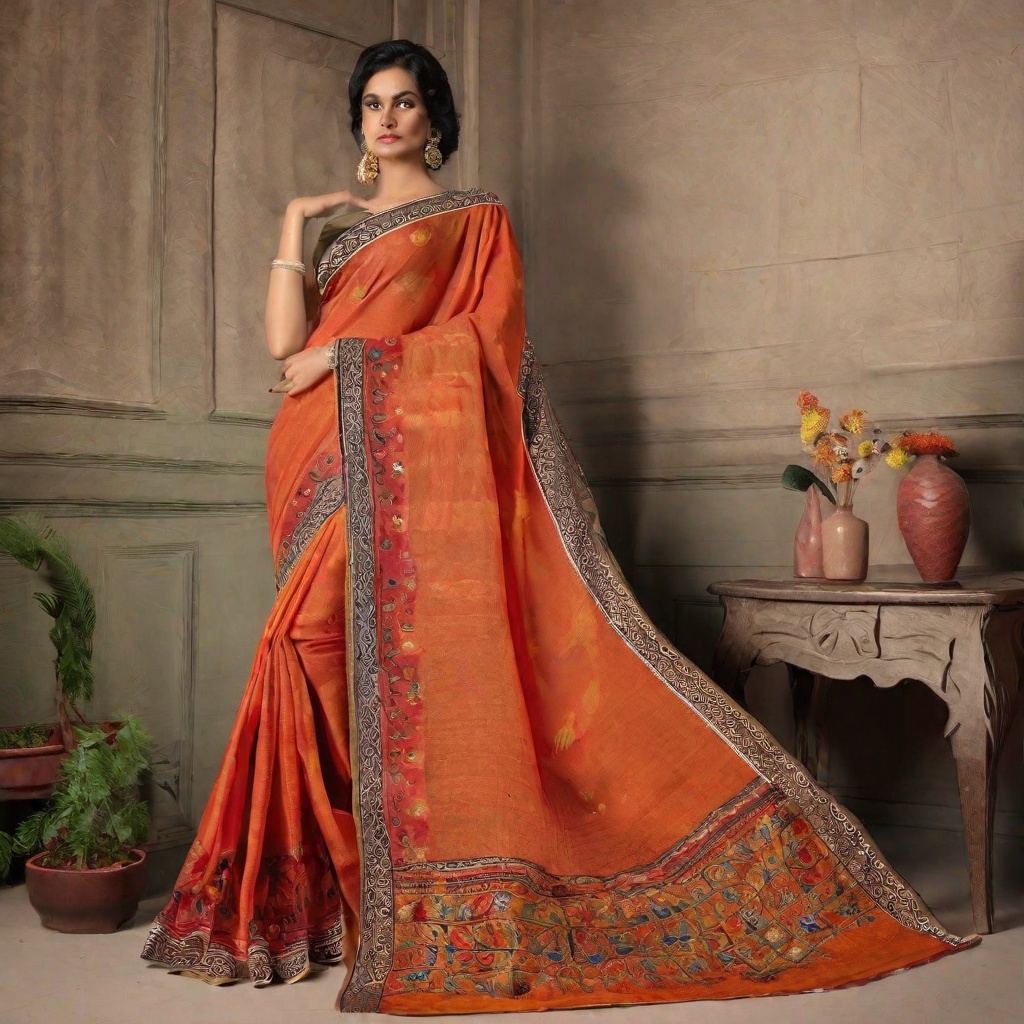Introduction Handmade Sarees
Sarees, the quintessential Indian garment, have been an integral part of the country’s cultural and sartorial heritage for centuries. The art of weaving sarees by hand is a tradition that has withstood the test of time, carrying forward the rich legacy of craftsmanship. In recent years, there has been a resurgence of interest in handmade sarees, as artisans infuse contemporary elements into this traditional art form. This article explores the enduring charm of handmade sarees and how artisans are seamlessly blending tradition with modern aesthetics.
The Timeless Allure of Beautiful Sarees
Handmade sarees, often referred to as handwoven sarees, are a testament to the artisan’s skill and dedication. Each saree tells a story – a narrative woven into its fabric, reflecting the cultural nuances of the region where it was crafted. The process of making a handmade saree involves intricate weaving techniques, with the weaver pouring heart and soul into every thread. This dedication results in a garment that goes beyond mere clothing; it becomes a piece of wearable art.
Artisanal Craftsmanship: A Glimpse into the Making
The journey of a handmade saree begins with the selection of raw materials – from the finest silk to cotton, jute, or even blends of various fibers. The choice of material depends on the region’s tradition, climate, and the intended use of the saree. The artisan then meticulously hand-dyes the yarn, creating a palette that captures the essence of the design.
The loom becomes the artisan’s canvas, and the shuttle, their brush. Weaving intricate patterns requires immense skill, with some sarees taking weeks or even months to complete. The result is a masterpiece that showcases the weaver’s expertise and the cultural heritage embedded in every motif.
Bridging Tradition and Modernity
While the traditional craftsmanship of handmade sarees has an undeniable charm, contemporary artisans are breathing new life into this ancient art form. The fusion of traditional designs with modern aesthetics has given rise to sarees that effortlessly bridge the gap between the old and the new.
Artisans are experimenting with colors, patterns, and textures, infusing vibrancy into the traditional saree landscape. Modern motifs find their way onto the fabric, creating a unique blend of heritage and contemporary style. This evolution ensures that handmade sarees remain relevant and appealing to a diverse audience.
Sustainable Fashion: A Driving Force
As the world embraces sustainable living, handmade sarees are emerging as a frontrunner in the realm of sustainable fashion. The use of natural fibers and traditional weaving techniques inherently aligns with eco-friendly practices. Additionally, the longevity of these sarees, coupled with the timeless appeal of their designs, promotes a shift towards a more sustainable and conscious approach to fashion.
Consumers are increasingly drawn to the idea of investing in a handmade saree as a piece that not only enhances their wardrobe but also contributes to the preservation of traditional crafts and the environment.
Regional Diversity: A Kaleidoscope of Styles
India’s vast cultural diversity is mirrored in its handmade sarees. Each region boasts its unique weaving styles, motifs, and color palettes. From the vibrant Banarasi sarees of Uttar Pradesh to the delicate Kanjeevarams of Tamil Nadu, and the earthy ikats of Odisha – the variety is astounding. The regional diversity ensures that there is a handmade saree to suit every taste and occasion.
Artisans take pride in preserving their regional identity through their craft, and consumers appreciate the authenticity that comes with a saree rooted in tradition.
The Rise of Handmade Saree Artisans
The renewed interest in handmade sarees has given rise to a new generation of artisans who are blending traditional techniques with contemporary design sensibilities. These individuals, often entrepreneurs in their own right, are creating niche markets for their unique creations.
Social media platforms and online marketplaces have become powerful tools for these artisans to showcase their work to a global audience. This exposure not only helps them sustain their craft economically but also promotes cultural exchange and appreciation.
The Handmade Saree Revival: A Cultural Movement
The revival of handmade sarees is not just a fashion trend; it’s a cultural movement. As consumers seek a deeper connection with the products they buy, handmade sarees offer a tangible link to India’s rich cultural heritage. Each saree becomes a piece of wearable history, connecting the present generation to the craftsmanship and stories of the past.
Conclusion
Handmade sarees, with their timeless appeal and evolving designs, continue to weave a narrative that transcends generations. The fusion of tradition with contemporary flair not only breathes new life into this ancient craft but also ensures its relevance in the ever-changing landscape of fashion. As we celebrate the artisans who dedicate their lives to preserving this cultural treasure, we find ourselves draped in the threads of tradition, woven with the contemporary flair that defines our modern identity.
